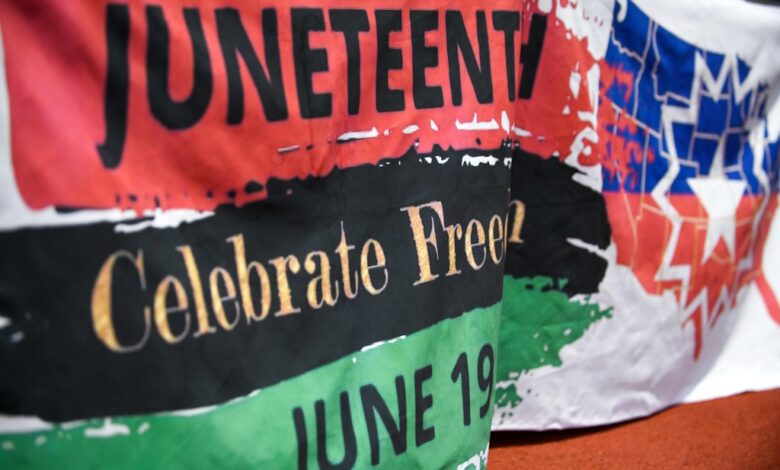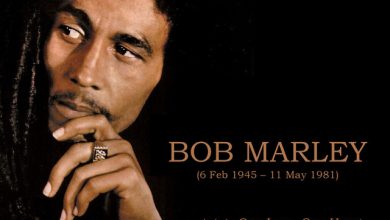The History of Juneteenth Explained in 10 Key Moments

Juneteenth, also known as Emancipation Day, Freedom Day, and Black Independence Day in the United States, commemorates the liberation of approximately 250,000 enslaved individuals in Texas in 1865.
While it is not the day slavery was legally abolished in the country, it is the oldest known celebration honoring the end of slavery in the United States.
Here are 10 key events surrounding the day:
The Emancipation Proclamation and Its Limitations
The Emancipation Proclamation, issued by President Abraham Lincoln in 1863 during the American Civil War, declared that all persons held as slaves in Confederate states were to be considered free.
However, the proclamation’s reach was limited, as the Union Army was unable to enforce it in areas still under Confederate control. This meant that many enslaved individuals, particularly in the South, remained in bondage.
Texas: A Hub for Continued Enslavement
During the Civil War, Texas became a haven for slaveholders seeking to evade the Emancipation Proclamation.
With minimal Union Army presence and little fighting occurring in the state, Texas was not closely monitored, allowing enslavers to relocate over 150,000 slaves there.
The Arrival of Union General Gordon Granger
It wasn’t until June 19, 1865, that the enslaved population in Texas received news of their freedom. Union General Gordon Granger and his troops arrived in Galveston, Texas, and announced the abolition of slavery in accordance with a proclamation from the Executive of the United States.
General Order Number 3
On that historic day, General Granger read aloud General Order Number 3, which stated, “The people of Texas are informed that, in accordance with a proclamation from the Executive of the United States, all slaves are free.”
The order emphasized equality of personal rights and property between former masters and slaves and advised the freedmen to remain in their current homes and work for wages.
Juneteenth has since become a day of remembrance and celebration, highlighting the resilience and spirit of the African American community.
It serves as a reminder of the struggles faced by those who fought for freedom and equality and a call to continue the fight against systemic racism and injustice.
Jubilation and Freedom
According to a report by NBC News, the news of emancipation was met with jubilation by the enslaved people in Texas.
Felix Haywood, a former slave whose testimony was recorded in the book “Lone Star Pasts: Memory and History in Texas,” vividly described the moment:
“The end of the war, it come jus’ like that—like you snap your fingers… Hallelujah broke out…
Soldiers, all of a sudden, was everywhere—comin’ in bunches, crossin’, walkin’ and ridin’. Everyone was a-singin.’ We was all walkin’ on golden clouds… Everybody went wild… We was free. Just like that we was free.”
ALSO READ: Black slave Thomas Fuller, known as the Human Calculator
Delayed Freedom and Continued Exploitation
However, not all slaves in Texas were immediately freed after General Granger’s announcement. Some were kept in bondage by owners who withheld the news of emancipation to benefit from their labor during the harvest season.
Racism and Violence
Many Black people faced racist abuse and violence even after emancipation.
Susan Merritt, as cited in “Lone Star Pasts,” reported, “Lots of Negroes were killed after freedom… bushwhacked, shot down while they were trying to get away.
You could see lots of Negroes hanging from trees in Sabine bottom right after freedom.”
The Birth of Juneteenth Celebrations
The first official Juneteenth celebrations took place in Texas the year after Granger’s announcement.
On June 19, people held prayer meetings, sang spirituals, and wore new clothes to symbolize their newfound freedom.
Red became a significant color, and a strawberry drink was often served to represent the blood shed by the slaves.
Emancipation Parks and Community Celebrations
Following the announcement of emancipation, former slaves in Texas organized and purchased lands known as “emancipation grounds” for Juneteenth celebrations.
For example, in the 1870s, former slaves in Houston pooled $800 to buy ten acres of land, creating Emancipation Park for annual Juneteenth events.
Similar parks were established in Austin and Mexia (now Booker T. Washington Park).
Juneteenth celebrations spread to other states over the years, becoming an annual tradition that celebrates freedom and honors the resilience of the African American community.
The Legal Recognition of Juneteenth
In 1980, “Emancipation Day in Texas” was established as a legal state holiday to honor Juneteenth. This marked an important step in recognizing the significance of Juneteenth in Texas’s history and its broader implications for African American liberation.
Challenges in National Adoption
Despite its long history and cultural significance, Juneteenth has faced challenges in gaining national recognition as a paid public holiday.
Two years after being signed into law as a federal holiday, many states have yet to adopt Juneteenth as a paid public holiday.
According to the Congressional Research Service, 25 states are yet to recognize Juneteenth as a paid public holiday, highlighting the ongoing struggle for universal recognition and celebration of Juneteenth across the United States.
Juneteenth Celebrations Today
Juneteenth celebrations across the country are diverse and vibrant, reflecting the rich cultural heritage of African Americans.
These celebrations typically include prayer and religious services, family gatherings, picnics, festivals with music and food, including traditional strawberry drinks, and educational programs.
These events serve not only as a commemoration of the past but also as a celebration of freedom and a reminder of the ongoing struggle for equality and justice.
As Juneteenth continues to gain recognition and popularity across the United States, it serves as a powerful symbol of resilience, community, and the ongoing fight for racial equality.





